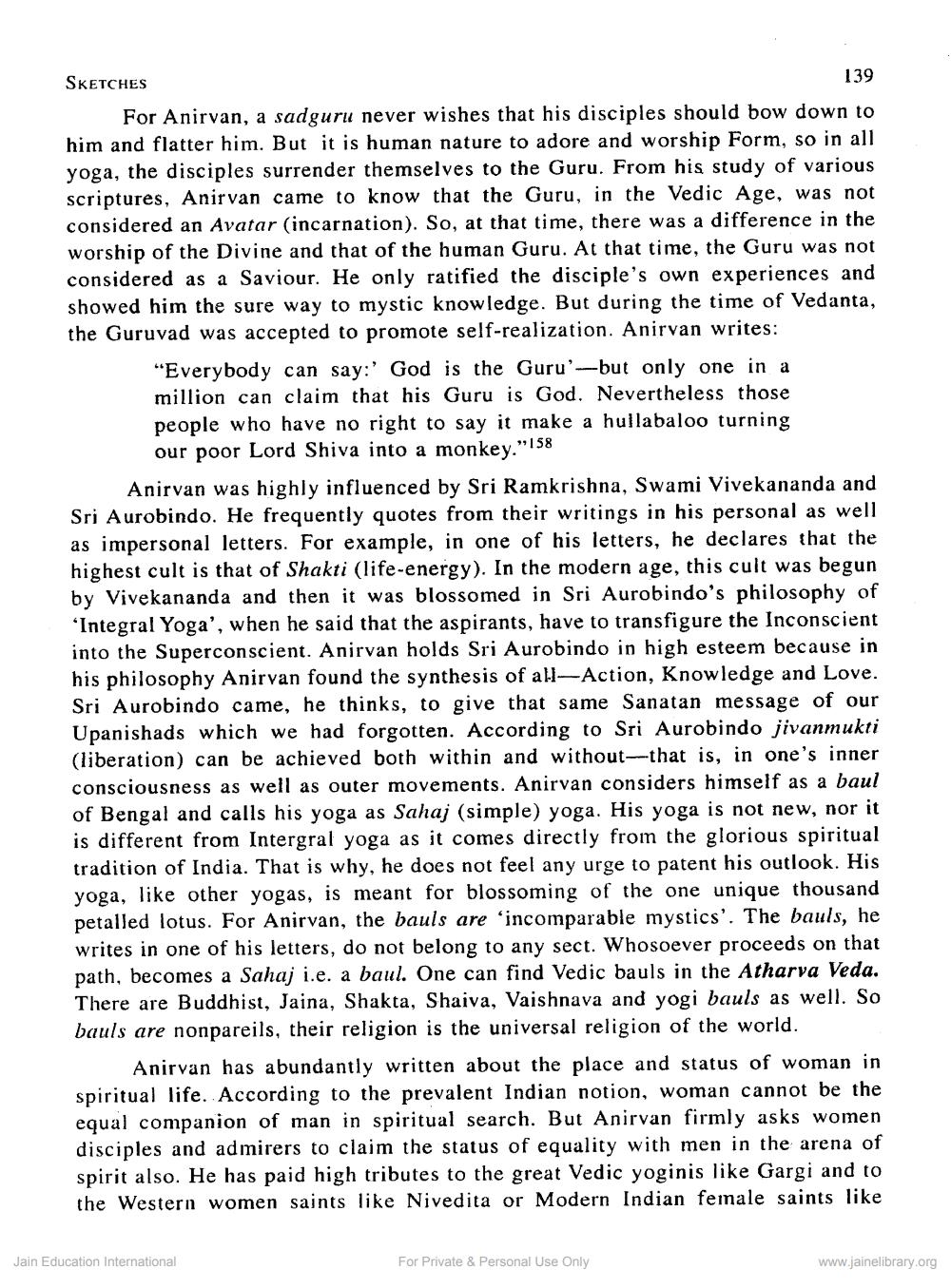________________
SKETCHES
139 For Anirvan, a sadguru never wishes that his disciples should bow down to him and flatter him. But it is human nature to adore and worship Form, so in all yoga, the disciples surrender themselves to the Guru. From his study of various scriptures, Anirvan came to know that the Guru, in the Vedic Age, was not considered an Avatar (incarnation). So, at that time, there was a difference in the worship of the Divine and that of the human Guru. At that time, the Guru was not considered as a Saviour. He only ratified the disciple's own experiences and showed him the sure way to mystic knowledge. But during the time of Vedanta, the Guruvad was accepted to promote self-realization. Anirvan writes:
"Everybody can say:' God is the Guru'-but only one in a million can claim that his Guru is God. Nevertheless those people who have no right to say it make a hullabaloo turning
our poor Lord Shiva into a monkey."158
Anirvan was highly influenced by Sri Ramkrishna, Swami Vivekananda and Sri Aurobindo. He frequently quotes from their writings in his personal as well as impersonal letters. For example, in one of his letters, he declares that the highest cult is that of Shakti (life-energy). In the modern age, this cult was begun by Vivekananda and then it was blossomed in Sri Aurobindo's philosophy of 'Integral Yoga', when he said that the aspirants, have to transfigure the Inconscient into the Superconscient. Anirvan holds Sri Aurobindo in high esteem because in his philosophy Anirvan found the synthesis of all-Action, Knowledge and Love. Sri Aurobindo came, he thinks, to give that same Sanatan message of our Upanishads which we had forgotten. According to Sri Aurobindo jivanmukti (liberation) can be achieved both within and without-that is, in one's inner consciousness as well as outer movements. Anirvan considers himself as a baul of Bengal and calls his yoga as Sahaj (simple) yoga. His yoga is not new, nor it is different from Intergral yoga as it comes directly from the glorious spiritual tradition of India. That is why, he does not feel any urge to patent his outlook. His yoga, like other yogas, is meant for blossoming of the one unique thousand petalled lotus. For Anirvan, the bauls are 'incomparable mystics'. The bauls, he writes in one of his letters, do not belong to any sect. Whosoever proceeds on that path, becomes a Sahaj i.e. a baul. One can find Vedic bauls in the Atharva Veda. There are Buddhist, Jaina, Shakta, Shaiva, Vaishnava and yogi bauls as well. So bauls are nonpareils, their religion is the universal religion of the world.
Anirvan has abundantly written about the place and status of woman in spiritual life. According to the prevalent Indian notion, woman cannot be the equal companion of man in spiritual search. But Anirvan firmly asks women disciples and admirers to claim the status of equality with men in the arena of spirit also. He has paid high tributes to the great Vedic yoginis like Gargi and to the Western women saints like Nivedita or Modern Indian female saints like
Jain Education International
For Private & Personal Use Only
www.jainelibrary.org




